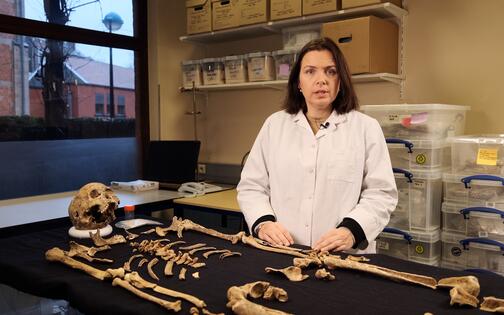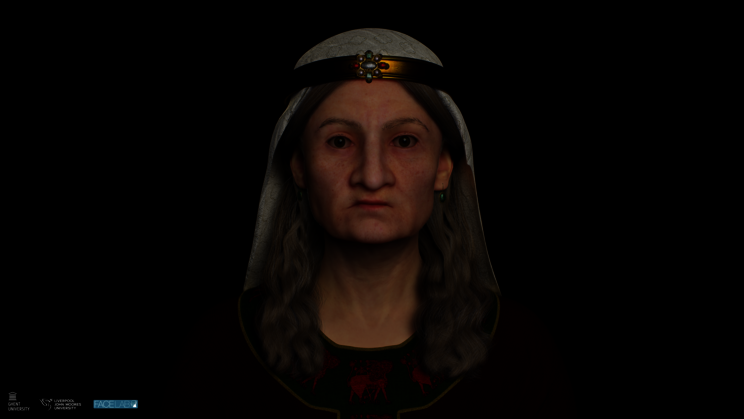The extensive story of the research
The story so far …
May 2006. The City of Ghent’s archaeological survey ahead of the construction of an underground car park beneath Sint-Pietersplein was entering its final phase. The large square had already yielded a whole host of clues that supplemented the historical backdrop to the abbey’s construction, as well as a unique insight into the accompanying grave sites.
During the final phase of the excavation, right in front of the entrance to the abbey church, the archaeologists discovered seven graves from the ninth to twelfth centuries. Their location could only mean one thing: that these were the remains of people from the nobility.
Grave S127 caught the eye of researchers, and spawned the hypothesis that it might belong to Judith, the first Countess of Flanders and daughter of the Carolingian king Charles the Bald. Historical research into her life and a study of the skeletal remains were combined with Carbon-14 dating, but a definitive answer was not forthcoming.
Fast forward fifteen years. Judith’s file was serendipitously dusted off for the filming of the VRT programme ‘Het Verhaal van Vlaanderen’ [The Story of Flanders]. The archaeologist of the City Of Ghent Geert Vermeiren, and the Ghent University professor and historian Steven Vanderputten were keen to re-open this ‘cold case’. They joined forces with Professor Isabelle De Groote and Dr Jessica Palmer, biological anthropologists from Ghent University.
This served as the starting signal for a large-scale multidisciplinary scientific study, in which the archaeological and historical sources were collated and tested against the latest analytical techniques in the field of biological anthropology. These laboratory research processes had come on in leaps and bounds since 2006, and furnished information that we could only have dreamed of fifteen years previously.
The skeletal remains were meticulously examined and tested against history, and vice versa. The various disciplines put together the pieces of the puzzle in the hope of establishing a coherent overview. It was this continuous interaction that made the research so exceptional. Fresh perspectives led to new questions and new results.
2024
The story returns home to St Peter’s Abbey, once the final resting place of the Counts of Flanders.
All currently feasible research questions and avenues concerning Judith, the first Countess of Flanders, have been explored, and are being exhibited to the public. This goes beyond the question of the identity of the woman in grave S127; as a visitor, you yourself become a scientist. A special scenography of intriguing research stations and ancient documents not only breathes new life into the Carolingian period, but also sheds light on Judith’s story.
-

Prof. Dr. Isabelle De Groote (UGent) -
Dr. Jessica Palmer (UGent) -
2 Show all photos

